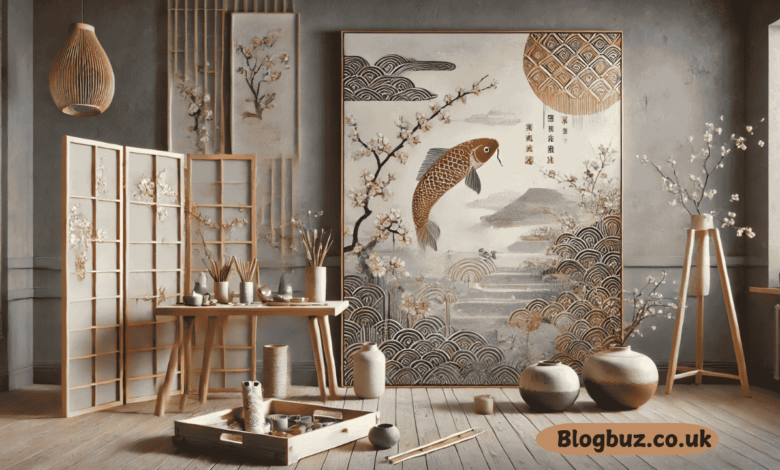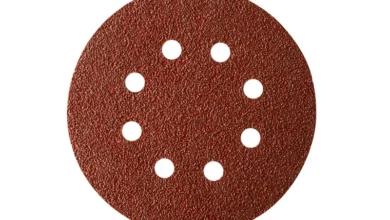Haruna Saito Portola: Bridging Tradition and Innovation in Contemporary Art

In the dynamic world of contemporary art and design, few names have made as profound an impact as Haruna Saito Portola. Renowned for her exceptional capacity to combine traditional Japanese aesthetics with modern design principles, Portola’s work transcends cultural boundaries, creating a harmonious fusion of past and present. This article delves into her journey, achievements, and contributions to the global art scene, shedding light on why Haruna Saito Portola is a name that resonates across continents.
Early Life and Inspiration
Born and raised in Tokyo, Japan, Haruna Saito Portola was surrounded by a rich tapestry of traditional Japanese culture. From an early age, she was fascinated by the artistry of ikebana (flower arranging), calligraphy, and the serene beauty of Japanese gardens. Her childhood experiences played a significant role in shaping her artistic vision. Growing up in a bustling metropolis introduced her to modern art forms, including manga, digital media, and street art.
This blend of traditional and contemporary influences set the foundation for her future work. It instilled in her a deep appreciation for cultural heritage while nurturing a desire to innovate and experiment with modern techniques. This duality would later become a defining feature of her artistic style.
Education and Artistic Development
Haruna Saito Portola pursued her formal education at the prestigious Tokyo University of the Arts, where she majored in fine arts. During her time there, she was exposed to various global art movements, including minimalism, modernism, and abstract expressionism. This exposure broadened her creative horizons and allowed her to integrate diverse styles into her work.
At the university, she studied under some of Japan’s most renowned artists, learning traditional techniques such as ukiyo-e (woodblock printing) and kintsugi (the art of repairing pottery with gold). However, she also immersed herself in digital tools, 3D modeling, and contemporary design software—this blend of skills equipped her to create a unique artistic language that resonates across cultures and generations.
Artistic Style: A Fusion of Old and New
One of the most striking aspects of Haruna Saito Portola’s work is her ability to blend traditional Japanese elements with contemporary design seamlessly. Her creations often incorporate motifs from Japanese culture, such as cherry blossoms, koi fish, and bamboo, rendered through modern techniques and materials. This combination of modernism and tradition creates a distinct visual language that appeals to people worldwide.
Her designs often feature clean lines, natural forms, and a sense of balance, reflecting the Japanese aesthetic principle of wabi-sabi, which embraces imperfection and the beauty of simplicity. Portola’s work is heavily influenced by nature, which is evident in her use of organic forms and materials such as stone, wood, and paper.
Key Features of Haruna Saito Portola’s Artistic Style
- Cultural Symbolism: Incorporating traditional Japanese symbols such as cranes, waves, and seasonal changes.
- Minimalism with Depth: Simplistic designs with deeper meaning, echoing traditional Japanese philosophies.
- Organic Forms: Use of nature as a central theme in all design forms.
- Modern Techniques: Embracing cutting-edge technology for digital art and design while maintaining a handcrafted feel.
Notable Works and Projects
Haruna Saito Portola’s portfolio is as diverse as it is impressive. She has worked on various projects, from intricate textile designs to large-scale installations and public art. Here are some of her most notable works:
- The Cherry Blossom Mural in Shibuya
- One of her early public art projects, this large-scale mural is located in the bustling district of Shibuya, Tokyo. The mural features delicate cherry blossoms in full bloom, rendered in a minimalist style with muted tones. The artwork symbolizes renewal and beauty in the urban landscape, attracting both locals and tourists.
- Kintsugi-Inspired Furniture Collection
- Portola’s fascination with traditional Japanese craft techniques led her to create a furniture collection inspired by kintsugi. Her furniture pieces, crafted from natural wood and adorned with gold accents, symbolize the beauty of imperfection and the value of repair over replacement. This collection has been celebrated for merging old-world craftsmanship with contemporary design.
- Nature-Inspired Textile Designs
- As a textile designer, Haruna Saito Portola has created numerous popular fabric collections in fashion and interior design. Her textiles often feature intricate patterns inspired by natural elements, such as leaves, water, and flowers. These designs are known for their soft color palettes and delicate details, making them highly sought after by luxury brands.
- Sustainable Art Installations
- Haruna’s dedication to sustainability has been a recurring theme in her work. In recent projects, she has focused on using eco-friendly materials and promoting sustainable design practices. Her commitment to environmental consciousness sets her apart in an increasingly greener solutionsindustry.
Global Recognition and Collaboration
Haruna Saito Portola’s work has gained international acclaim, with exhibitions in major cities worldwide, including New York, Paris, and London. Her ability to merge traditional Japanese aesthetics with contemporary design has made her a sought-after collaborator for brands, architects, and other artists.
One of her most notable collaborations was with Muji, the minimalist Japanese retailer. Haruna Saito Portola was commissioned to design a limited-edition homeware collection, including ceramics, textiles, and lighting. The collection was celebrated for its understated elegance and the seamless integration of Japanese cultural motifs into modern, functional design.
In addition to her collaboration with Muji, Haruna Saito Portola has worked with international fashion designers to create bespoke fabrics for runway collections. Her textile designs, known for their fluidity and organic patterns, have graced the runways of fashion weeks across the globe.
Impact on the Art and Design World
Haruna Saito Portola has been a trailblazer in bringing traditional Japanese design into the modern era. Her work challenges the conventional boundaries of art and design, blending cultural heritage with contemporary techniques in ways that resonate with audiences globally.
Her commitment to sustainability has also influenced the art world, encouraging more designers to consider eco-friendly materials and methods in their work. Haruna’s approach to art and design demonstrates that innovation and tradition don’t have to conflict but can coexist harmoniously to create something unique.
Haruna’s Influence on Emerging Artists
- Cultural Preservation: Many young designers look up to Haruna as a figure who has successfully preserved her cultural heritage while thriving in the global art scene.
- Innovative Techniques: Haruna’s modern tools, such as digital rendering and 3D modeling, encourage emerging artists to embrace technology.
- Environmental Focus: Her focus on sustainability inspires new generations of artists to consider the ecological implications of their work and to strive for a balance between aesthetic appeal and environmental stewardship.
The Future of Haruna Saito Portola’s Artistry
As Haruna Saito Portola continues to make waves in the art and design world, her future is bright with possibilities. Her unwavering dedication to merging traditional Japanese artistry with contemporary design is paving the way for a new generation of artists valuing heritage and innovation. Portola’s work is a testament to the idea that art is a living, evolving practice that transcends cultural boundaries and inspires change.
In the coming years, audiences can expect more groundbreaking collaborations, exhibitions, and educational initiatives from Portola. Her commitment to pushing the boundaries of what is possible in art will undoubtedly impact the global creative landscape.
Conclusion
Haruna Saito Portola is more than just an artist; she is a visionary who embodies the spirit of cultural synthesis. By marrying the elegance of traditional Japanese art with contemporary design, she creates works that resonate deeply with heritage and modernity. Portola’s journey is a powerful reminder of the importance of honoring the past while boldly exploring the future. As she continues to shape her narrative, she invites others to celebrate the splendor of diverse artistic expressions and the endless possibilities within the intersection of tradition and innovation.
You May Also Read: GalaxyTL: Bridging the Gap Between Asian Light Novels and English Readers




